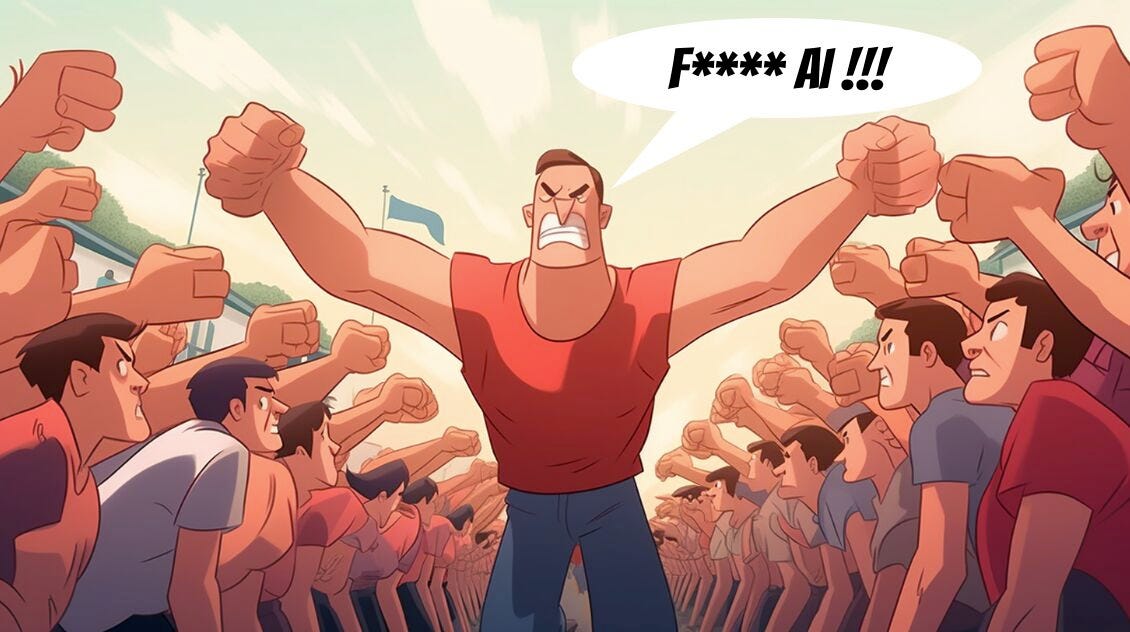The 'Last Mover' Theory: The Speed Limit of Your Business's Efficiency
Understanding and Overcoming the Bottlenecks in Your Company's Journey Towards Implementing Generative AI
In lean operations, a principle often called the "theory of constraints" holds a significant place. This concept underscores the importance of identifying and addressing the slowest part of any process, as it ultimately governs the overall speed and efficiency of the entire operation. This article will delve into the idea of the 'last mover' in a company and its impact, especially when it comes to the implementation of generative AI.
The 'Last Mover' Concept
Within a corporate environment, the term 'last mover' is often used to describe a department, team, or individual that is lagging behind the rest of the company, causing delays and inefficiencies. There may be various reasons for this, such as a lack of knowledge, insufficient resources, outdated technology, or ineffective processes. However, the negative impact of the 'last mover' is felt throughout the company, as it restricts the overall growth and progress of the organization.
This can be compared to driving on a highway, where your speed is limited by the slowest vehicle in front of you, regardless of how powerful your own car engine may be.
The Intersection of the 'Last Mover' and Generative AI
The 'last mover' phenomenon becomes obvious when you aim to implement generative AI in your company. AI is a field that is evolving at a breakneck speed, with new advancements and technologies sprouting constantly. However, the readiness to embrace these changes may not be uniform across the company. Fear of the unknown, resistance to change, and a lack of understanding about AI can make specific teams or individuals the 'last mover' in the AI adoption journey. This poses substantial challenges. The advantages of AI, including increased efficiency, enhanced decision-making, and the potential to uncover new insights, can only be fully leveraged if the entire company is on the same page.
If the 'last mover' is not prepared or willing to adopt AI, it can decelerate the entire process, restricting the pace and scope of AI implementation and its associated benefits.
A Real-World Encounter with the 'Last Mover'
To illustrate this concept, I recently met an employee working as a backend engineer at a software development company. He was gripped in a “boring” client project – parsing XML to facilitate communication between two outdated systems. He was spending countless hours trying to optimize a script that, in all honesty, could have been functioning in an afternoon. The real kicker? This “one-afternoon” script could have been refactored using generative AI (GenAI) in seconds. The use of GenAI doesn't mean surrendering human control over the code. On the contrary, GenAI is an assistant that can test thousands of combinations simultaneously, providing the most optimized piece of code if the instructions are well-defined.
The Turning Point
I convinced him to try it, suggesting he optimize just one function using GenAI. And then it happened - the 'click' moment. He realized he could handle it. He wasn't giving up control but gaining a powerful tool that could make his work more efficient and effective. Embracing GenAI just for one function didn't just empower him; it had a ripple effect throughout the company. He was no longer the 'last mover' slowing down the process. Instead, he became a catalyst, and a few days after, I talked to the company's CEO and he was delighted because this single event unlocked efficiency boosts and paved the way for new ambitions.
The Takeaway
This real-world example underscores the power of addressing the 'last mover' in a company. It's not just about identifying and addressing the slowest part of the process but also about empowering individuals with the right tools and mindset to overcome these bottlenecks. Does this resonate with you?
I'm eager to chat about it and curious to know your thoughts on how your organizations can address the 'last mover' challenges innovatively. Let's keep the conversation going.
Note: Naas v2 aims to blend GenAI with conventional work methods. We have developed a replica of ChatGPT that can be tailored to suit your requirements. If you are keen, you can apply to our closed alpha version here and try it out on naas.ai/chat




